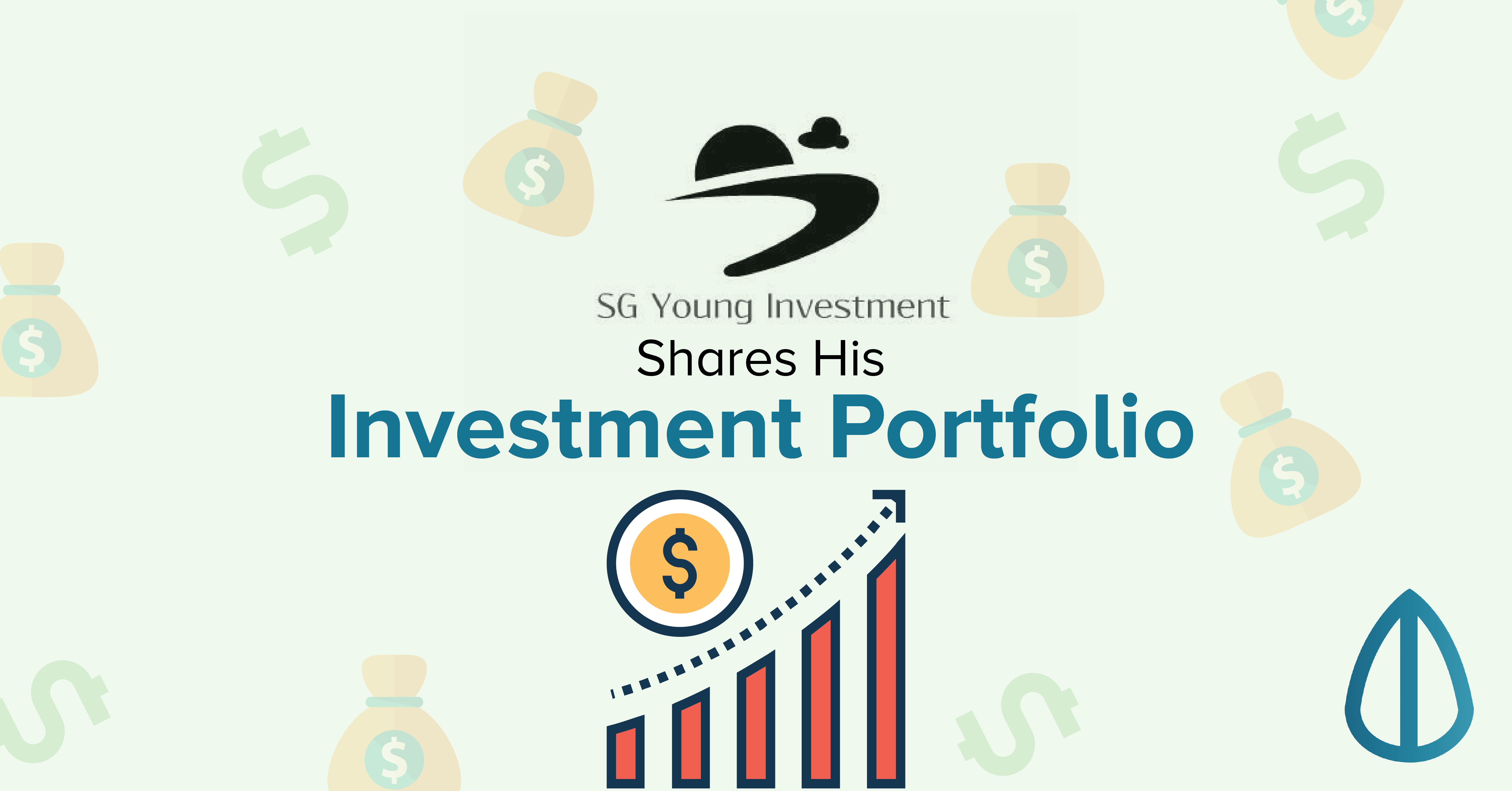Advertisement
Investing Made Simple: These 3 Funds Could Be All You Need As An SG Investor
"Just get the market returns. Don't be a smart-Alec and try to beat the market. You can't!" This phrase certainly brought back memories of my polytechnic lecturer who taught me a few modules from my Banking and Financial Services diploma days. Yes, the balding, middle-aged bespectacled gentleman who liked to chide us for being insensible brats certainly spoke words of wisdom.
Ok, just to be clear, when my lecturer spoke of "market returns," he was referring to exchange traded funds (ETFs) that track an underlying index, such as the Standard and Poor's 500 (S&P500). In this case, the S&P500 tracks the performance of the top 500 companies listed in the USA. Hence, an ETF which tracks this index would aim to simply replicate its performance, which means that while you may not get astronomical returns, you are more or less guaranteed to get markets returns (minus some tracking error, but lets not go into detail on this). But mind you, the market returns in recent times has not been too shabby either. Personally my returns from just S&P500, most of which was accumulated during the 2022 stock market decline, has yielded a 27% returns. Given that its February 2024, one could safely say that an annualised returns of about 12%-14% isn't not shabby.
All right, before I drift off-topic, here are 3 ETFs that an ordinary Singaporean can buy and not lose much sleep over. (Personally, if I were a novice investor or wish to just take a passive approach to investing, I would allocate 40% to the STI ETF, 40% to either the S&P500 or Global Equities Index Fund and the remaining 20% to Nikko AM SGD Investment Grade Corporate Bond ETF. This allocation is really not cast in stone, as it depends on your personal risk-appetite, age / investment time horizon.)
1. Straits Times Index (STI) ETF
All right, I know sticks would be thrown at me. Many seasoned investors have labelled the STI ETF as a "Super Terrible Index," due its performance being over-shadowed by the huge capital appreciation which other index funds such as the S&P500 and global equities index funds have been credited for. Nonetheless, the STI ETF (You can google the 30 companies which make up the STI for more info), of which there are two listed here, the first would be SPDR STI ETF (SGX:E33) and the second, Nikko AM Singapore STI ETF (SGX:G3B), have an annualised returns of slightly above 4% over the past 5 years. Of which most of it would have come from the above 3% dividend yield.
My personal take on this is that it makes sense to have a position in your home country economy, as the dividend pay-outs would be in SGD. This would eliminate currency risk and ensure that you as an ordinary investor do not have to bear the risk or the hassle of exchanging a foreign currency back to SGD. The caveat here would be that this works for Singaporeans, as we have a developed economy, accompanied by a healthy financial ecosystem, and socio-political stability. Whereas, if you are an investor in a developing country that is rooted in civil wars and political instability, then you should ideally stay away from investing in your country's index funds.
2. S&P500 ETF or Global Equities ETF
Well, personally I would advise a retail investor to hold the global equities ETF, as this would mean more diversification across both developed and emerging economies. Nonetheless, given that the USA comprise of more than 60% of the FTSE All-World Index, it would also be fine to invest in an S&P500 ETF. For Singaporean investors, it would be prudent to consider a few principles when investing in an overseas index fund:
i. This is the most important one, the fund expense fee/ ratio should not exceed 0.5%. This is crucial as high costs can eat away at your returns over a long duration.
ii. The fund manger has to be a reputable one, with good track record. Generally the established ones like Vanguard, I-Shares ETFs by Blackrock or State Street Global Advisors (SSGA) would be fine.
iii. The fund size has to be at least 100 million in asset under management. This is not an issue as the ETFs offered by the above-mentioned fund managers are usually in the billions.
iv. Choose an Ireland-domiciled ETF. Due to tax agreement treaties between the UK and the USA, funds domiciled in the UK would only be subjected to a 15% dividend withholding tax versus a 30% dividend withholding tax for a similar ETF listed in the USA. This means you as a foreign investor, would save quite a bit on your dividend taxes!
v. If possible, select a fund which is denominated in USD, instead of other foreign currencies, as the USD being the world's reserve currency, usually experiences smaller fluctuations in its value.
Hence, for Singaporean investors, if you prefer investing an a Global Equities ETF. You could either select Vanguard FTSE All-World UCITS ETF (USD) Distributing (LON:VWRD) or Vanguard FTSE All-World UCITS ETF (USD) Accumulating (LON:VWRA). If you prefer dividends being distributed to you, you could go for VWRD, whereas if you prefer the dividends to be automatically reinvested, and let the power of compounding work its magic, go for VWRA.
Yes, I haven't forgotten about those who prefer the S&P500. As Warren Buffett famously stated, "For 240 years its been a terrible mistake to bet against America." Similarly, if you prefer dividends being distributed to you, you could go for Vanguard S&P500 UCITS ETF USD Dis (VUSD), whereas if you prefer the dividends to be automatically reinvested, and let the power of compounding work its magic, go for iShares Core S&P500 UCITS ETF USD ACC (CSPX).
3. Nikko AM SGD Investment Grade Corporate Bond ETF
"My bonds also got whacked damn badly over last year man. Bonds ARE USELESS. Low returns and as risky as stocks!" One netizen lamented at the end of 2023, when bond prices became depressed due to countless FED interest rate hikes to combat inflation. Upon reading further, he commented that his bond portfolio was a mixture of high-yield bonds and government bonds. On this note, as ordinary investors, one should stay clear of high-yield bonds. There is a reason why such bonds can offer yields of above 5%. That's because the underlying companies tend to have lower credit ratings, which basically means higher risk of defaulting and by extension you losing your investment amount. But lets not get into the intricacies of this.
Nonetheless, MOST of the time, bond prices and stock prices have a relatively low correlation. This just means that when stock prices go down, bond prices would likely trend in the opposite direction. In addition, bonds usually do not experience the huge price fluctuations experienced by stocks. Nonetheless, I would like to stress that the bonds I am referring to bond ETFs made up of either government bonds or investment grade bonds, which means that the credit rating of the companies that make up the ETF are from highly-rated companies. In addition, the bonds should be issued in SGD. This is because the returns from bonds usually range between 2% - 4%. Hence, given the relatively lower returns from bonds, it doesn't make sense to take on currency risk. Hence, in this sense, the bond portion in your portfolio would serve 2 purposes:
i. Bonds would serve as a stabiliser to your portfolio, by reducing the overall price fluctuation.
ii. Bonds generally give out reliable income streams, hence one could take advantage of this by using the dividends to either re-invest or head to the nearest coffeeshop to lim kopi (drink coffee). Its really your choice.
Hence, one could consider Nikko AM SGD Investment Grade Corporate Bond ETF (SGX: MBH), as the average crediting rating of the companies in this fund, which includes the likes of DBS, UOB and Changi Airport Group, averaged a A credit rating. While MBH might not be as safe as a government bond ETF like its ABF Singapore Bond Index Fund, its dividend pay-out of above 3% (at the time of writing in February 2024) more than compensate of the additional risk.
Conclusion
All in all, if you wish to achieve diversification across asset classes, geographical locations and industries, the above-mentioned 3 ETFs would allow you to achieve this. All these, without the stress of individually spending the time, effort and stress of selecting individual stocks and bonds. All right time to start the lazy 3 fund portfolio. When you're done, head down to the nearest coffeeshop to lim kopi.
Yours sincerely,
Finance Kaya Toast
Disclosure: This article was written as me talking to myself as an ordinary Singaporean, wishing to achieve financial freedom. It does not represent any financial advise. All opinions are independent and represent just my two-cents on all matters financially-related.
4
Discussion (4)
Learn how to style your text
Reply
Save
Thanks for sharing!
Reply
Save
Still love sti etf...
Read 2 other comments with a Seedly account
You will also enjoy exclusive benefits and get access to members only features.
Sign up or login with an email here
Write your thoughts
Related Articles
Related Posts
Related Posts
Advertisement









Thanks for sharing!